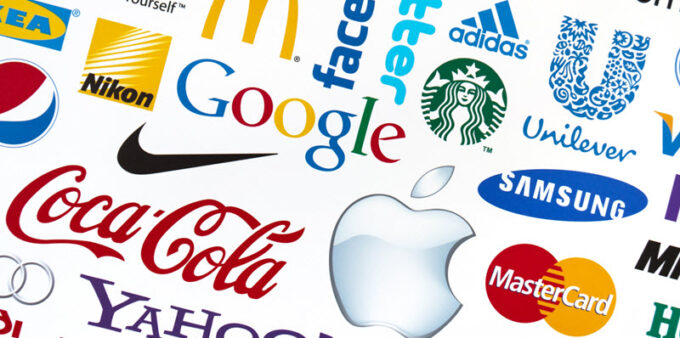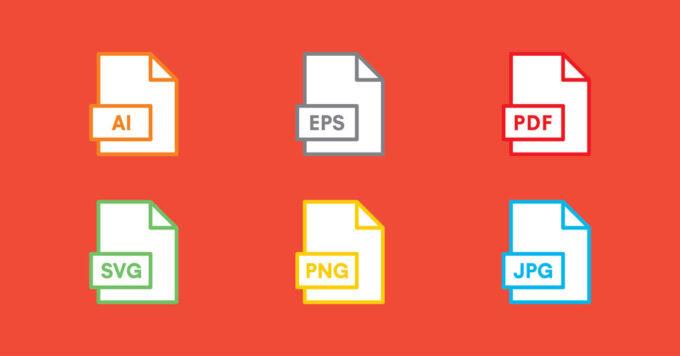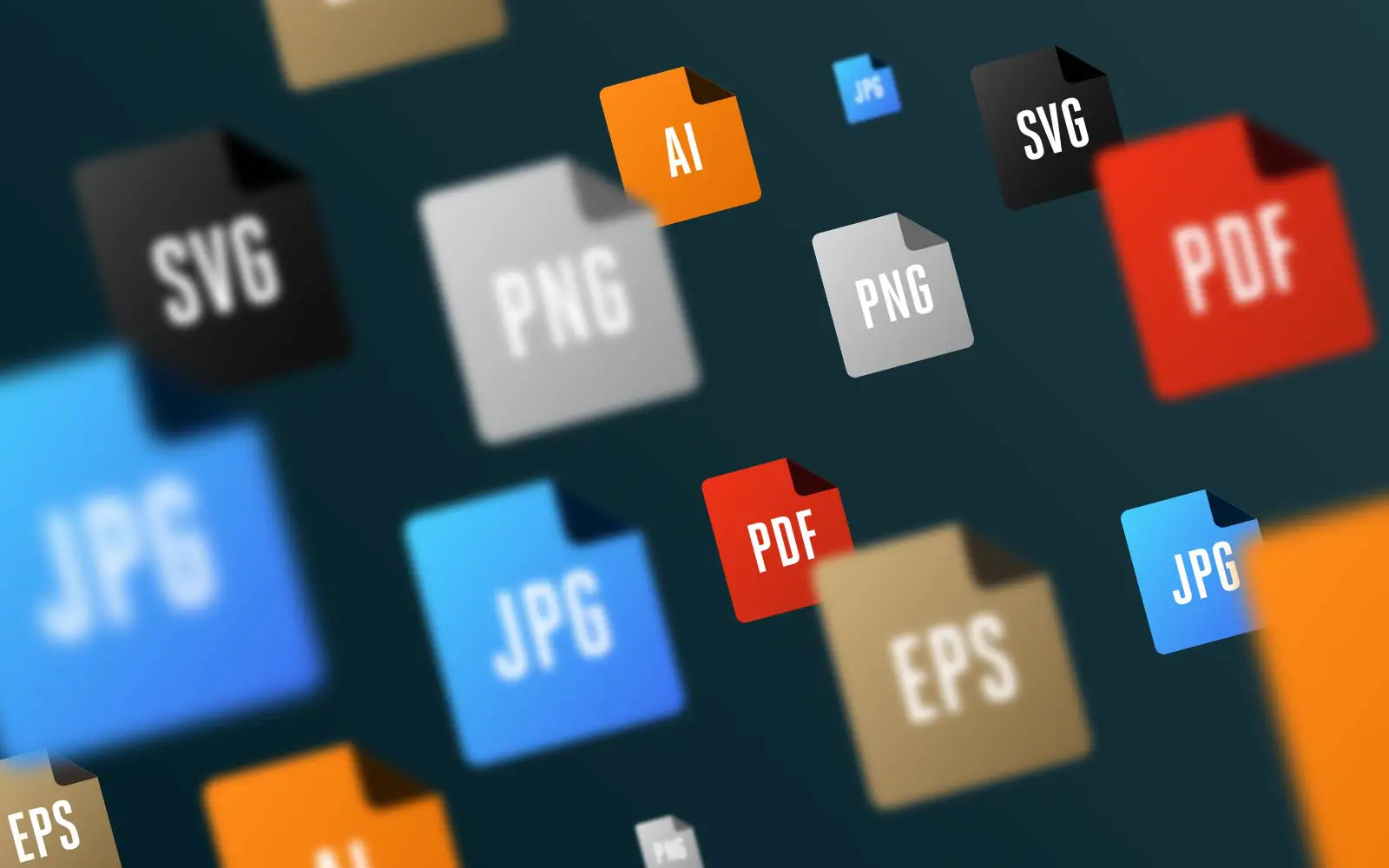Once you’ve created a logo and received a digital file, you may not know what to do next. At the moment, there are several formats and not everyone knows which one is suitable for their purposes. In this article, we will talk about the four most famous logo file formats: PNG, SVG, EPS, PDF.
Develop a logo in a convenient format in the online generator Turbologo.
What is a logo
Surprisingly, but a fact: many managers, when ordering the development of a logo, do not even know what it is! Some people think that a logo is just a pretty picture. Someone that the logo and the trademark are one and the same.
A logo is an individual graphic sign (drawing), a typeface for a brand, or a combination of a graphic sign and typeface. The purpose of the logo is to convey its idea to the target audience of the company.
In order for a logo to be useful and help a business develop and promote its products and services, it is important to understand, when developing it, why it is specifically needed. So let’s take a look at its main features.
Function 1
Quality assurance in the eyes of the consumer. An attractive logo symbolizes to customers that the brand’s products are of high quality. This is especially useful in the case of new customers who are not yet familiar with your products and judge it only by external attributes. And here the logic of thought is this: if a manufacturer has placed a logo on its products, it means that he is proud of it and does not hesitate to publicly declare who made it.
Function 2
A way to inform the audience. With the help of the logo, you can convey to the audience the basic information about the company: the area in which it operates, the country of production, the key characteristics and properties of the product, the purpose and mission of the company. It is not necessary, of course, to reflect all these characteristics at once, you need to focus on the most important ones for promotion and emphasize them. For example, if a company works on German technologies, this can be played up in a logo, and if it orders all components in China, it would be pointless to emphasize this.
Function 3
The fundamental element of corporate identity. Typically, the company’s corporate identity is built on the basis of its logo, which already contains the main corporate colors, visual images, “mood”, the necessary associations.
Function 4

Aesthetic function. A beautiful, harmonious logo is able to attract the attention of buyers and form an attractive image of all products sold under this symbol in their minds. The logic here is this: if a company has a high-quality logo, then the quality extends to all its activities – the production of goods and the provision of services.
Function 5
Help with advertising and marketing. The logo often becomes a key element of advertising messages (with the exception of audio advertising). It can and should be placed on all advertising products: on leaflets, signs, business cards, on the website and in social networks, in advertising videos and in printed publications.
Function 6
Creating a positive image. The logo is able to combine all the features of the company, its advantages, the variety of products and create a single system out of this – the image. That is, to bring different areas of activity, goals and principles of the brand to a common denominator, the role of which can be played by the logo. The psychological effect is important here – a positive image of the logo is subconsciously projected onto the brand’s products.
Logo file formats
PNG logo format
PNG files are suitable for any purpose of the digital direction. In addition, they will come in handy if you plan to use digital images with transparent areas (for example, logos), followed by colored backgrounds or placed on top of other graphic elements. PNG files are not suitable for printing.
Pros of using PNG files:
- The quality does not deteriorate when compressing and decompressing the image;
- Display a huge number of colors;
- Transparent backgrounds are supported;
- Easy and fast viewing as these are raster files.
Logo in PNG format is placed:
- On websites and blogs;
- On presentation files;
- In Word or Google docs;
- In social networks;
- In online stores or designers;
- In images (for example, to add a watermark).
How do PNG files open?
You can open a PNG file on a computer, smartphone and tablet, as this type of file is easy to read. You can view a PNG image without downloading it in almost any browser.

SVG logo format
SVG – Scalable Vector Graphics
SVG is designed to work on the web. It was designed using mathematical formulas rather than individual colored pixels on a page. The clarity and high quality of vector files always remain the same, so if you are going to send your logo to a printer for printing, it is better to use them.
Pros of using SVG files:
- Scaling to any size without loss of quality (besides, SVG-files look good on any monitor);
- Files “weigh” less than PNG or JPG;
- Availability of XML web language and editable software design;
- Transparent backgrounds are supported.
SVG files are used for:
- Various printed materials (business cards, posters, stickers, and so on);
- Clothes and footwear;
- Stickers and labels;
- Sites;
- Sending to the designer for the purpose of making edits.
How are SVG files opened?
SVG files open in Chrome, Firefox, Edge, Safari, Internet Explorer, Adobe Illustrator, or other Adobe software such as Photoshop and InDesign when using the SVG plugin.
In addition, SVG files can be sent to designers if the logo needs to be edited. Inkscape and GIMP are two free programs that support SVG files (note that we do not recommend editing SVG in these programs).
EPS logo format
EPS files are a graphic format for vector images in Adobe Illustrator. They are needed if you plan to print and edit.
Advantages of EPS files:
- You can work at any scale – from a billboard to a business card;
- Vector format;
- Logo can be edited in Adobe Illustrator or Photoshop
- Transparent backgrounds are supported.
EPS files are used for:
- Printed materials (business cards, posters, leaflets, etc.);
- Stickers and labels;
- Clothes and footwear;
- Sending to the designer for the purpose of making edits.
How is an EPS file opened?
If you don’t have Illustrator or Photoshop installed, these files will be difficult to open. But, you can download the free programs Sketch or Inkscape.

PDF logo format
PDF files are developed by Adobe. As a rule, they are used for documentation, but with their help, images (including logos) are also exchanged.
Pros of PDF files:
- Files are easy to open and view;
- The same formatting, regardless of the type of device;
- Transparent backgrounds are supported;
- Easy and convenient shipping.
Logos in PDF format are placed:
- On business cards, posters, leaflets;
- On stickers and labels;
- On items of clothing and footwear.
How is a PDF file opened?
Since it is convenient to view files in this format, they are downloaded and opened on computers, smartphones, and tablets. Many browsers provide users with the ability to read PDF files. Adobe Acrobat Reader is ideal for this format. To edit PDF files, you need Adobe Illustrator or Photoshop.
How to choose a format
If the logo is being used for digital purposes (such as a PowerPoint presentation, or a watermark on an image), we recommend choosing PNG files.
If the logo will be printed on business cards, brochures, clothes, discount cards, vector files are needed. SVG is preferred, but if it doesn’t fit the printer, send EPS or PDF.
Submit SVG or EPS files for designer revisions.
That’s all! We hope that our tips will help you in creating and promoting your brand. Good luck!








